Is wool vegan? As a vegan, you’d think my response would be an emphatic no.
Wool comes from sheep, and it’s not for human consumption—therefore, it’s exploitation.
That was my understanding of wool. And if I’m honest, that’s what I wanted to believe.
However, the ethics of wool are not as straightforward as we’d like it to be. It’s more grey than any area of veganism I’ve investigated to date.
You’ll find that there are extreme examples of good and bad across wool practices, depending on various factors.
Most vegan articles about wool highlight severe exploitative cases, and most anti-vegan articles try to shine a spotlight on sheep’s positive health and welfare.
These competing perspectives make it incredibly confusing to know what is right and wrong as mindful consumers.
So I want to bring an objective perspective to the wool industry by assessing ethics as it relates to veganism.
A brief history of sheep and wool
Wild sheep are in mountainous habitats, and their diet consists of grass primarily.
Male sheep are called rams, female sheep are ewes, and young sheep are lambs. A group of sheep is known as a flock.
According to Wikipedia, the bodies of wild sheep (and some domestic breeds) are covered by a coat of thick hair to protect them from cold.
This coat contains long, stiff hairs, called kemps, over a short, woolly undercoat, which grows in autumn and sheds in spring.
However, today, only 2% of the global sheep population are wild sheep.
Humans have developed the woolly undercoat into a fleece of long wool, which was fundamentally used to keep humans warm.
In addition to wool, sheep are also kept for milk and meat.
Domesticated sheep have been part of human culture since 11,000 to 9,000 B.C. Sheep were the second tamed animals only after dogs.
The domestication and breeding of sheep paved the way for the rise of shepherding, whose primary responsibility was to keep the safety and welfare of their flock.
Shepherding has evolved into commercial farming practices, ranging from small backyard acreage to large scale operations.
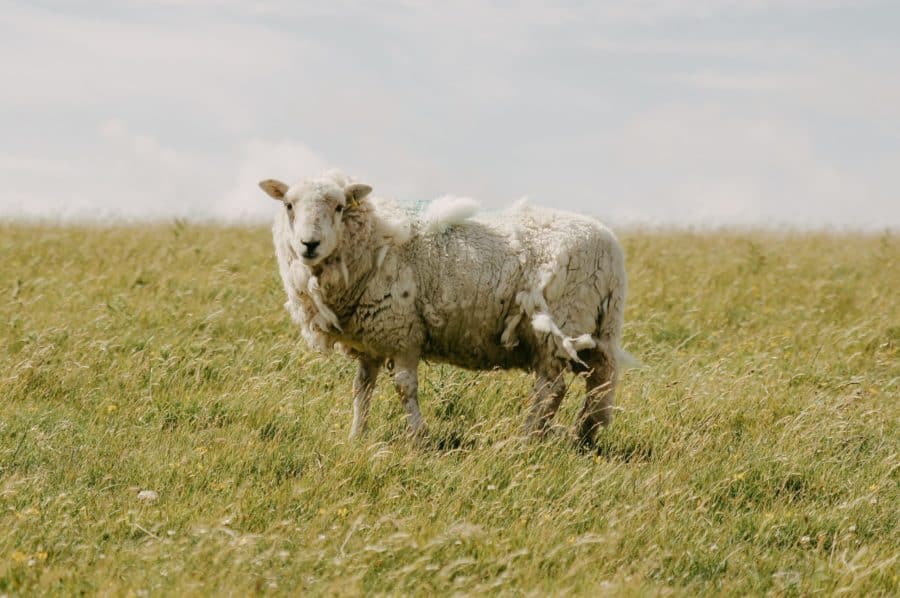
Do sheep need to be shorn?
As mentioned above, 98% of the total sheep population has been domesticated and bred to grow wool. The other 2% of sheep have naturally shedding hair.
This basically means that all sheep need to be shorn.
A prime case study is Shrek 1 and Shrek 2, the two sheep who escaped from farms in New Zealand and Australia, respectively, ran wild for six years. When the sheep were found, they grew over 60 pounds of fleece on their bodies.
I’m surprised they survived Australian summers carrying such a thick coat!
So yes, sheep need to be shorn. This is (now) by design, and I don’t think the intent to breed sheep to produce more wool is ethical, but we can’t undo the past.
I also want to call out my hypocrisy as we do the same thing with dogs. For example, I adopted a pet dog at the age of 11 months who was bred to appease many positive qualities for human companionship.
- He doesn’t shed hair.
- He can live indoors happily.
- He’s good with children.
- He wants to snuggle all the time.
Even as a vegan, I’m not naive to acknowledge that my dog is essentially a product of the dog breeding industry. Now Chewy and all other domesticated dogs are dependent on humans for their survival.
My dog needs to be shorn, but we call it grooming.
Sheep are also dependent on humans for their survival which includes shearing.
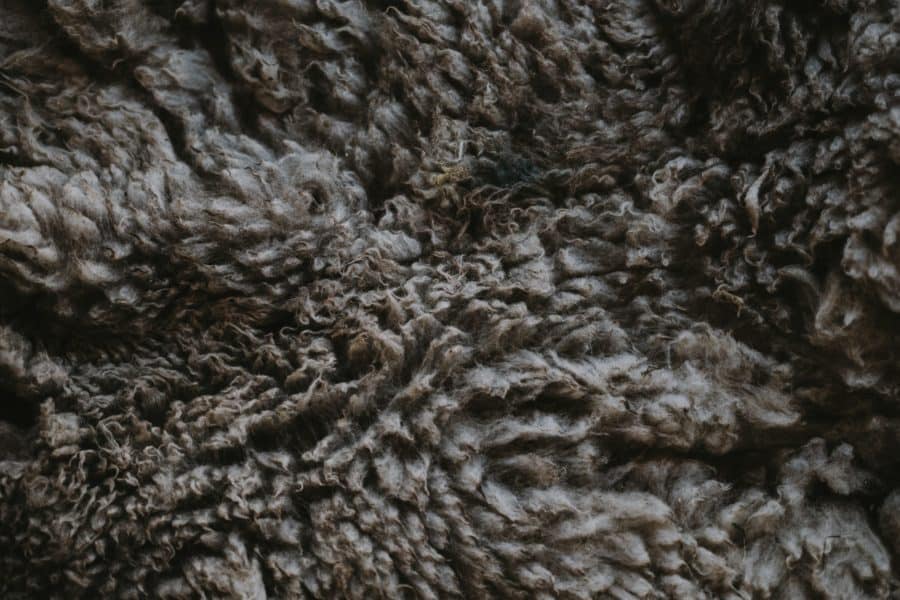
How large is the wool industry?
According to Business Wire, global wool production generates about USD 2.2 billion annually.
The International Wool Textile Organisation states that the wool industry cares for approximately 1.1 billion sheep.
So 1 billion sheep generates over 2 billion in annual revenue for fleece.
Wool is supplied from all over the world. However, the largest producer is Australia, which is responsible for 25% of the wool industry.
The wool market is like watching a volatile stock price, and I guess that’s because it is!
With China being the largest importer of wool and with constant trade wars between China and the U.S., predicted revenues remain inconsistent.
To summarise, the wool industry is significant in size. And while farmers routinely complain about not making enough money to support their production, there’s still a reason why over a billion sheep are still kept to produce wool—cash money.
Read more: Is Cashmere Cruel? How This Luxury Material is Produced
How is wool extracted from sheep?
The simple answer is that sheep are shorn using mechanical shears called handpieces.
These handpieces are large clippers, not too dissimilar to the ones I use to shave my head or what dog groomers use.
Yet, despite the simple tools, there are varying degrees of treatment and care towards sheep in the shearing process—depending on the farm and the shearer.
On one side of the spectrum, there are ruthless methods of removing wool from sheep. Here are some examples:
- Sheep naturally resist shearing time (much like some pet dogs), and some shearers aggressively pin down the sheep to prevent them from moving around, causing pain and trauma to the animals.
- When sheep resist, footage has been captured of shearers hitting and stomping on the heads of sheep to keep them still.
- Shearers are generally paid by the weight of wool produced, not by the hour. The goal of the shearing school is to get shearers to be able to shear 100 sheep in a day. Some shearers can shear up to 400 sheep in a day! These folk are referred to as Gun Shearers. So with internal competition created by the framework of the shearing profession, some shearers go about their practice carelessly, trying to hit and exceed their daily targets. Going at such a speed often means harming sheep, e.g., by regularly knicking ears, tails, and chunks of skin.
- When wounds are accidentally created through the shearing process, some sheds sew wounds without the use of anesthetics, again causing significant pain to the sheep.
This is just one side of the story.
On the other side of the spectrum, skilled shearers with many years of experience take time and care to methodically remove wool from sheep without causing any harm to the animals.
The contrast of cruelty is not unusual in animal farming, as we see the same inconsistencies between commercial egg-laying and backyard eggs or organic beef versus non-organic beef.
The problem with wool is that there’s very little transparency and accreditation through labelling for consumers to know how the wool they’re purchasing was obtained.
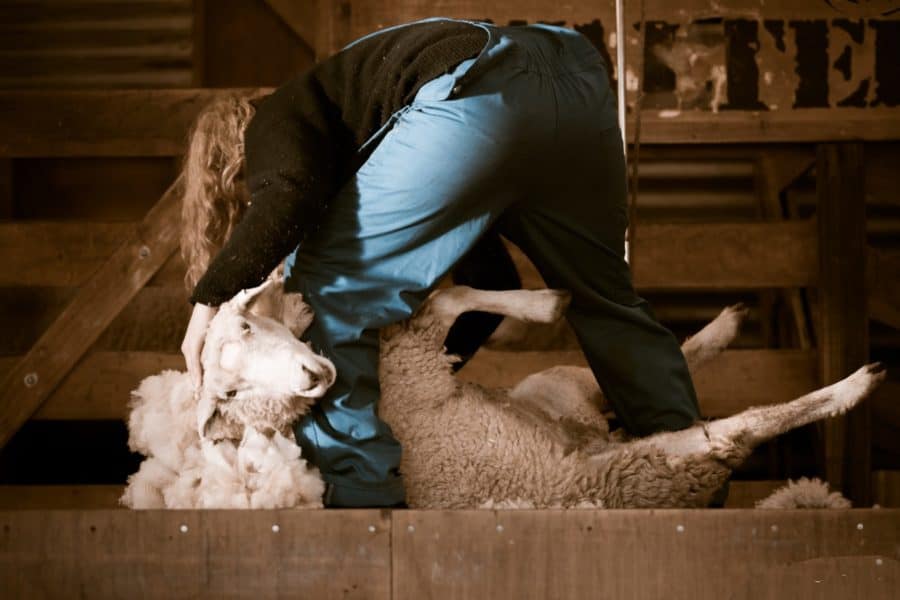
When are sheep shorn?
When evaluating the ethics of wool, it’s essential to understand when sheep are shorn as it relates to seasons and weather.
For this section, I’m going to focus on the Australian wool market, as it’s the largest.
It was once common practice to shear sheep annually just before spring. This makes sense as maintaining a thick coat becomes uncomfortable for sheep during hot Australian summers.
However, wool brokers are advocating for 6-month shearing intervals to maximise profits.
Frequent shearing cycles have been found to increase the fertility of ewes, increase lambing and higher rates of twins. This helps to breed more lamb for meat, and more adult sheep for wool, thus increasing overall revenues.
With these cycles, shearing occurs in October (Spring), February (Summer), and June (Winter), with wool auctions held in the proceeding months.
For our international readers, while Australia is a warm country, many states have incredibly harsh winters. I live in one of them—so I know!
The two states with the highest production of wool are New South Wales and Victoria, both of which experience cold winters.
Now it’s one thing to deal with unpredictable weather when you try to shear at the right time of the year. But it’s downright deadly to pencil in shearing during the months of winter.
For instance, Tasmania is one of Australia’s chilliest states, and Peta captured footage of shorn sheep on a farm in the middle of winter.
Animal Liberation reported 10-15 million newborn lambs die each year from starvation, neglect and exposure to cold weather.
Again there are always two extremes in these examples.
A quick local Google search reveals an award-winning shearing company called Elkins Alpaca Shearing who suggests shearing once a year just before the warmer months. That’s the way it should be.
Inconsistencies, folks. Inconsistencies.
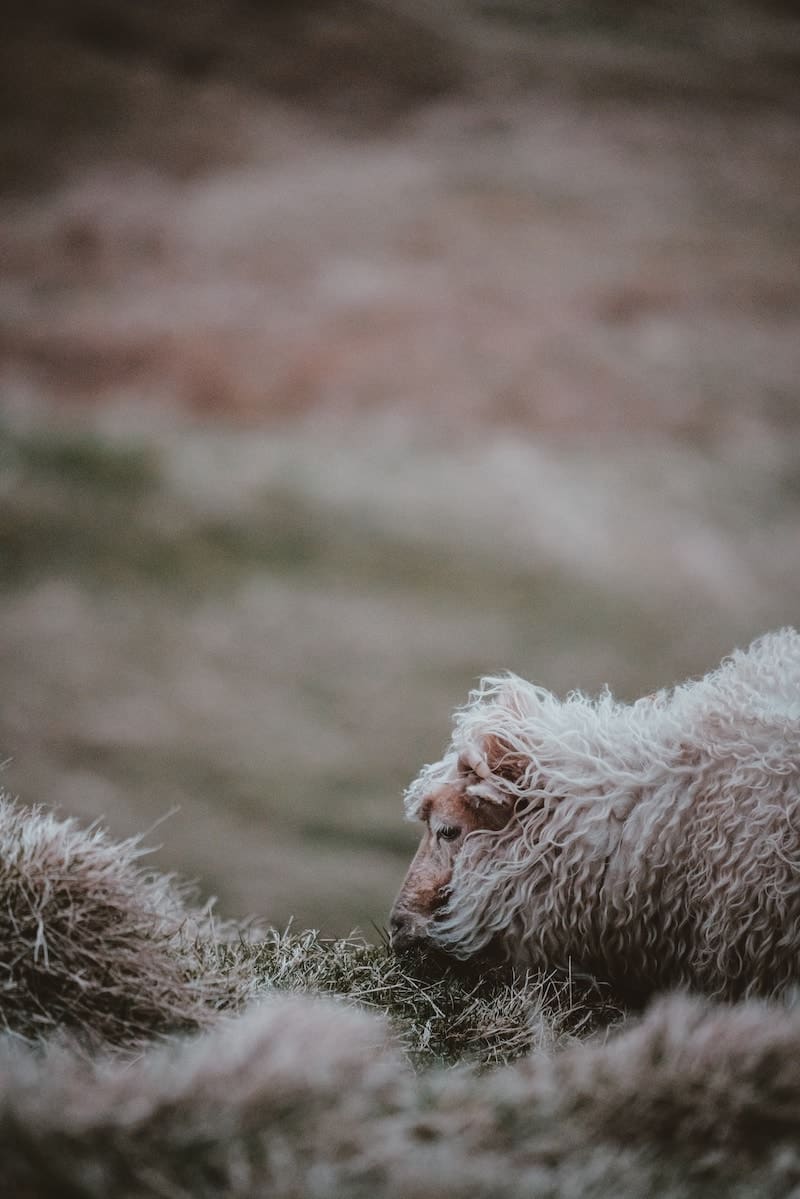
Maintaining Flystrike
Another point of contention in the wool industry is the treatment of a condition in sheep called Flystrike.
Flystrike is a myiasis condition in which domestic sheep are infected by one of several species of flies which are external parasites of sheep.
It’s pretty disgusting.
When sheep pee on their coat and make it dirty, flies are attracted and lay eggs on the sheepskin. Fly larvae then eat into the sheep and kill them.
Millions of sheep and lambs die each year from Flystrike.
Flystrike can be treated using a variety of methods, including:
- Through regular shearing. Shearing keeps wool down on sheep, and therefore reduces chances of attracting Flystrike. However, as discussed previously, more frequent shearing may result in shearing in colder months, which isn’t ideal.
- Flystrike can be treated by applying products like Cyrex, and more recently, tea tree oil, which are liquids that prevent and kills larvae.
- Another approach is a process called mulesing, which involves removing the skin from the genital/buttock area of the sheep to prevent wool from growing and attracting flies.
Like all of the other examples, there are two sides of the spectrum when looking at the harm caused to sheep in the process of treating Flystrike.
If we were to treat sheep with the same love and care as we do with domesticated cats and dogs, we would take them to the vet and get them treated with the least amount of irritation to the animal.
I do not doubt that there are farmers who approach treatment with this level of consideration.
However, getting veterinary care for flocks of sheep is very costly and would eat into profits. So, of course, there are cheaper methods like mulesing, which, if done well, can be okay for sheep.
But there are many examples of where mulesing can be very cruel and painful to sheep. After all, we’re talking about removing chunks of skin with varying degrees of care.
Read more: Is Mohair Ethical? What You Need To Know
How the meat and wool industry works together
It’s impossible to discuss the ethics of the wool industry without mentioning the meat industry.
If you Google “how to make money from sheep,” you’ll find lots of information on how to monetize a flock.
The three main revenue streams from keeping a flock, including:
- Meat – the “highest quality” meat is from lambs, which are sheep under the age of 12 months. You can also make money from mutton, which is the flesh from an adult sheep. However, mutton is not very popular.
- Wool – as I’ve mentioned already, sheep are shorn one to three times a year, and you can sell their wool on the market.
- Milk – sheep milk is a specialty product used to make cheeses like pecorino and Roquefort.
So why am I mentioning the various revenue streams from sheep?
Well, when assessing whether wool is vegan, we’re analysing multiple levels of exploitation during the life of a sheep.
I acknowledge that sheep need to be shorn, but does that mean we’re not exploiting them?
Let’s break this down for a moment.
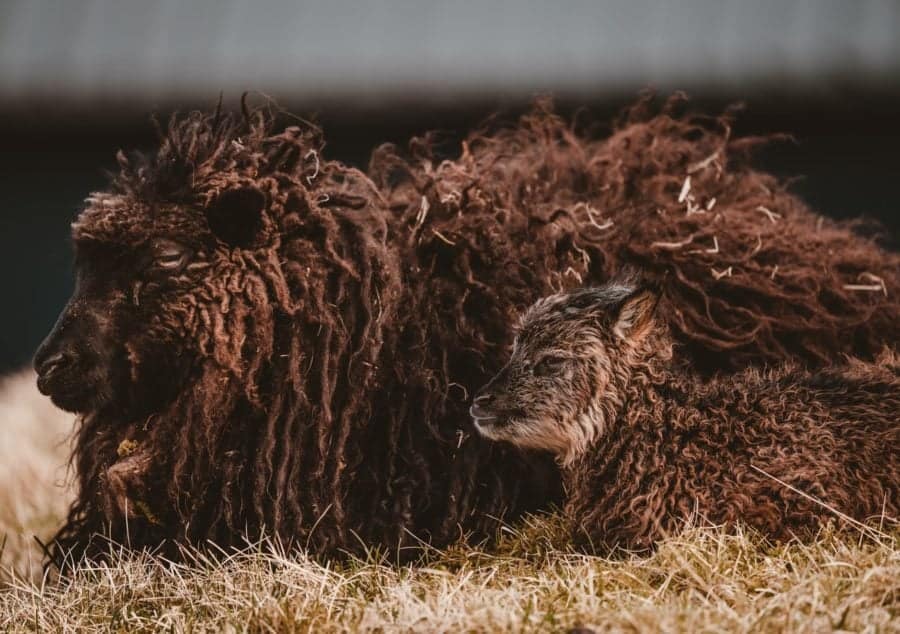
A farmer needs adult sheep to produce wool. But those same adults are also used for breeding lambs. So there’s a dual purpose.
Breeding more than two to three lambs to every ewe is too much for a mother to handle, often resulting in Mastitis.
According to the Australian government, Mastitis is the term for a bacterial infection of the udder. It is most common in ewes raising multiple lambs. Most cases occur during the initial weeks after lambing or immediately before weaning.
With lamb meat representing most of the profit in a flock, it’s only natural for farmers to breed an excessive amount of lamb, which then exploits ewes through Mastitis.
Furthermore, farmers use sheep to produce milk for the cheese market. Again, this increases Mastitis in ewes as we steal milk for human consumption instead of supporting the weaning lambs.
Read more: Cruelty-Free Milk Explained: Ranking The Worst To The Best
Another consideration is taking lambs away from their mothers, creating separation anxiety. A practice we look down upon in the dairy industry.
So while we need to shear sheep, the question remains; are these sheep being exploited during their lives? It appears that the answer is yes.
What happens to adult sheep that are no longer productive?
After spending a few hours in sheep forums, I found a few options for managing old sheep.
When a ewe reaches about five years of age, they start losing their front teeth from grazing all day.
As they struggle to graze, it changes their biology—leading to diminished milk supply. It also results in lambs not reaching market weight at weaning.
At this point, the ewe is no longer profitable, so commercial farmers will typically auction them off to stockyards so they can get some money for their assets before the sheep becomes utterly useless to them.
What happens to these sheep in stockyards?
For the most part, sheep continue to be exploited for breeding, milk, and wool—but often in terrible conditions.
Once there is truly no productivity left, the sheep get sent off to slaughter for mutton, burgers, pet food, and other types of foods.
Another terrifying option is exporting sheep overseas.
Each year, 1.7 million sheep are exported from Australia to the Middle East and North Africa. If you don’t know already, live export conditions are horrific, and no living being should experience such a thing.
But these trade agreements exist to serve the halal community in these regions. Who, by the way, slits sheep’s throat without the use of stunning as per halal standards.
Again, this is just one extreme, but unfortunately, it’s a common destiny for many sheep.
There are case studies of backyard farmers who keep sheep on until they naturally die. Sheep have a similar life expectancy to dogs living between 10-12 years on average.
This is a much better scenario than being sent away at five years old. At this point, these sheep are considered to be pets.
Is there a scenario where wool is vegan?
So is wool vegan? Sure, there are some rare situations where one could make the argument. But that would mean meeting two requirements:
- Sheep need to be shorn carefully—just like what you’d expect from your caring local dog groomer.
- Sheep are kept purely as pets or rescues where they aren’t exploited for breeding or milk.
It’s just like the human hair industry, and yes, there’s such a thing!
Some hair salons sell excess human hair to companies that produce wigs, and I believe, some fashion garments.
We don’t see this practice as exploitation, so why would we see it differently with sheep?
The problem is, vegan-friendly wool, while it sounds harmless, is incredibly rare—as it’s challenging to find trustworthy suppliers. The traceability of wool fabrics, in general, has a long way to go.
As you can see from this post, there are exploitative practices and non-exploitative practices at each point of contention.
My concern is that once we start exploiting animals for revenue, it becomes harder to draw the line for what is ethical. We keep taking and taking, little by little, justifying along the way until we outright exploit sheep.
Finding pure altruistic wool farms still entices entrepreneurs to do a little bit more, and at what point do they wake up and realise that they’re running a commercial practice?
Demand for a product you can produce is an enticing prospect.
The way I see it, if we’re living in the grey with wool, as vegans, I think it’s safer to not participate in the consumption of wool. Better to be sure, right?
We’ve spent thousands of years modifying DNA for our needs, and it’s likely to take a long time to reverse the detrimental impact of our decisions.
If we keep buying wool, we keep signalling to the wool industry to breed more sheep, which comes with all of the other problems.
Summary: is wool vegan?
Sheep are specifically bred for wool, meat and milk. Farmed sheep don’t live as long as they naturally would and experience varying degrees of exploitation in their lifetime.
However, if sheep are cared for as domestic pets, are shorn in appropriate seasons, and get to live their full life, there are some rare scenarios where wool is vegan-friendly.
Sustainable alternatives to wool
Since becoming vegan in 2014, I’ve found it easy to live without the consumption of wool.
Now I’m not living in Iceland, but where I live, it does get to -5 degrees Celsius with frost, and I do just fine without wool.
The most common vegan alternative to wool is organic cotton. Now cotton is not perfect, as it requires a lot of water to produce, but I’ve found it to be the best functional alternative.
For a list of innovative brands making fashion (and bedding) without the use of wool, check out our list of the best ethical and sustainable clothing brands.
Another alternative is to buy wool second-hand because, at this point, you’re not directly telling the market to produce more.
It’s ultimately up to you to decide what you think is the right thing to do. Just know that as much as there is “good” in the wool industry, there’s also “bad”.
What do you think? Is wool vegan?
What do you think? Is wool vegan?
Where do you sit on the ethics of wool as it relates to the exploitation of sheep?
I’d love to start a conversation with you in the comments below.
Thanks for reading.
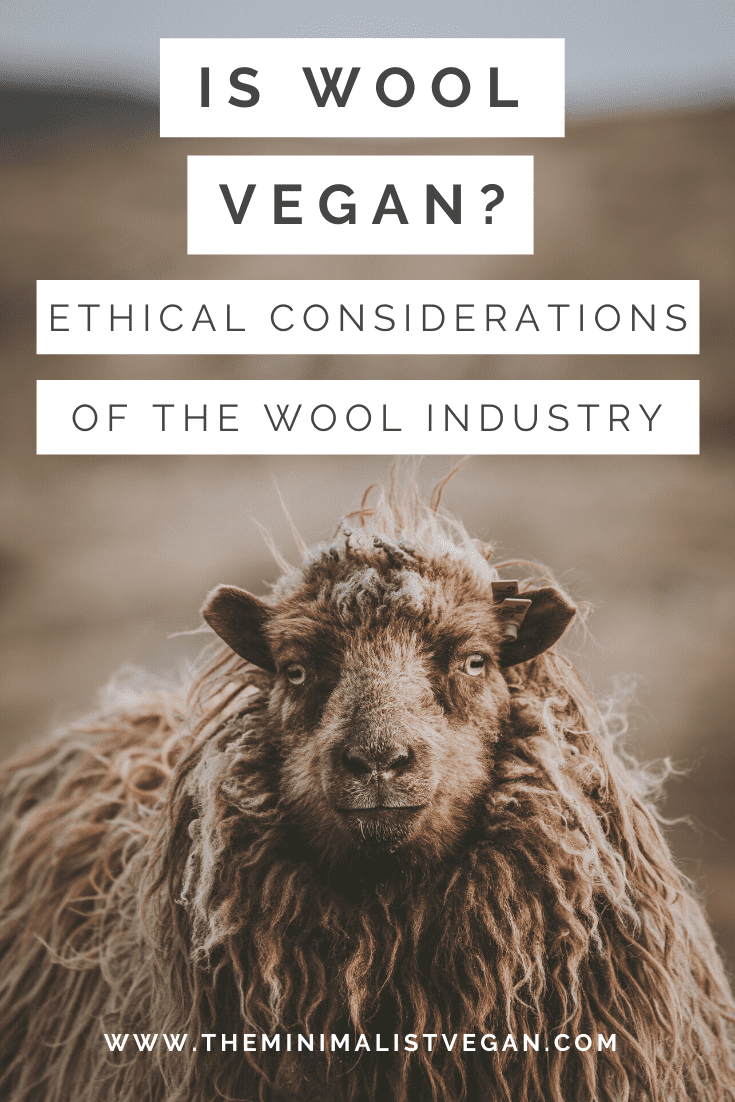

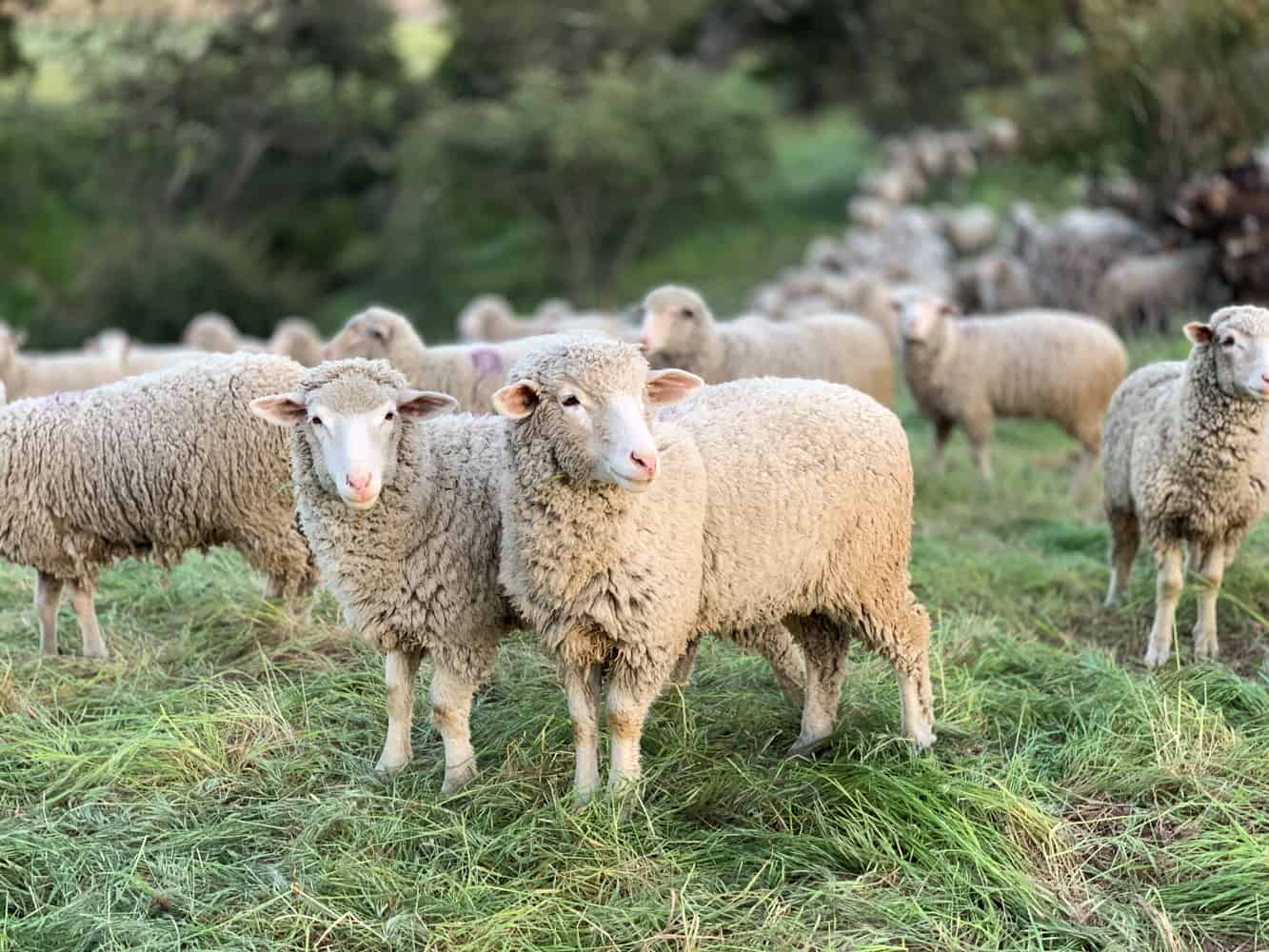
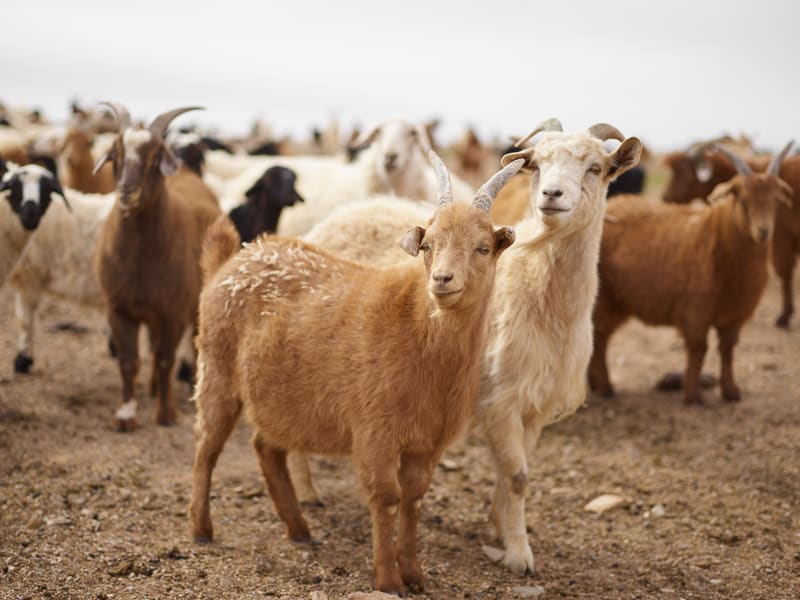
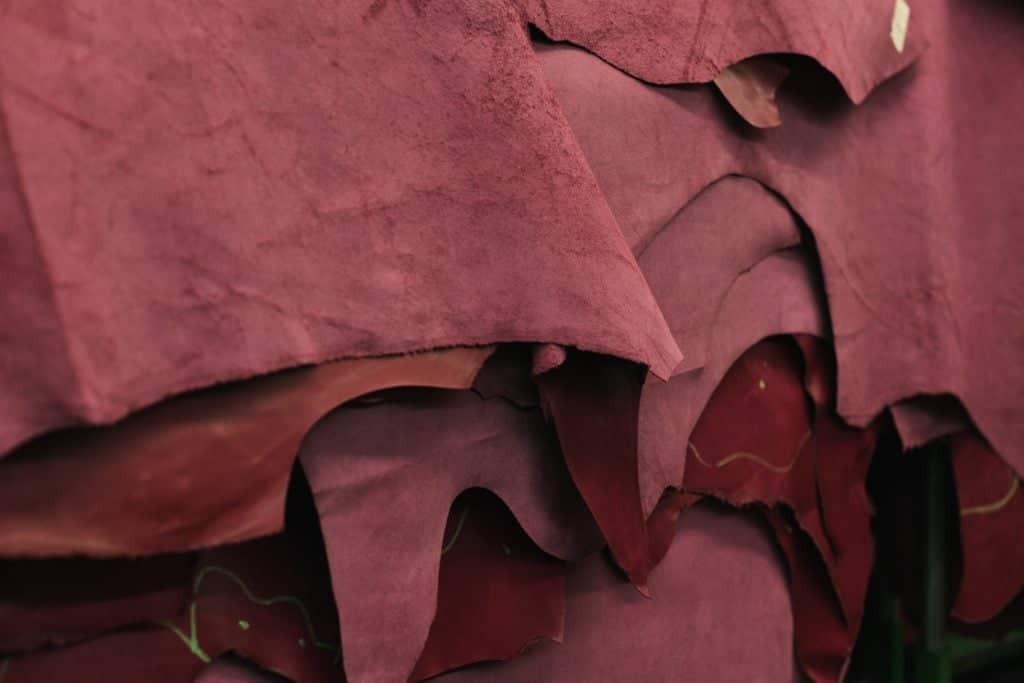
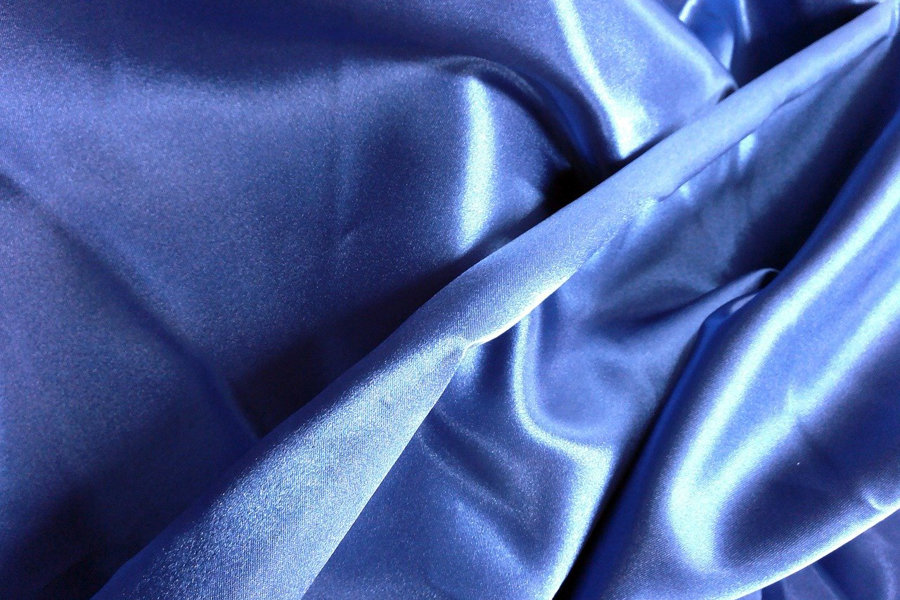
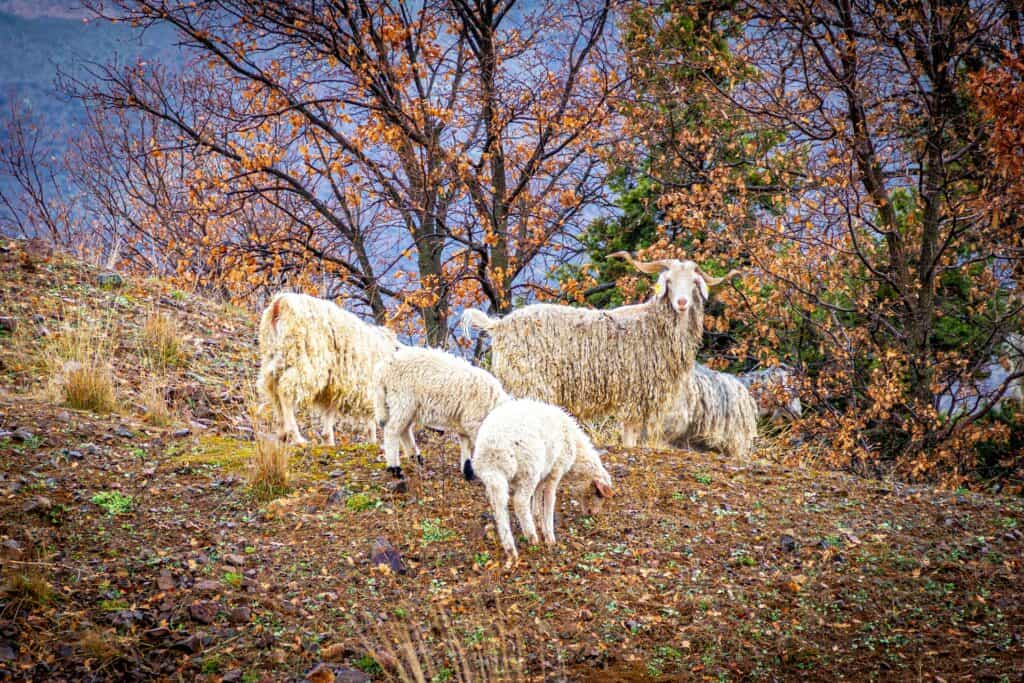
Thank you for this article. I’m vegan, and I also love to knit. Animal fibers (not just wool, but also alpaca, angora, mohair, etc.) are the vast majority of the market, it’s really difficult to find yarn made with just plant fibers, cotton is very often mixed with merino, and linen with silk for some reason. There are high end yarn companies that certified that their wool is mulesing free, and I would be ok with spending more money if it means that I’m super sure that the sheep are treated nicely. But as you mentioned in the article mulesing is not the only issue. The problem is that wool is so much nicer to work with than cotton or linen. At the moment I’m trying to see if I can find second hand yarns, maybe from people selling the ones that they don’t like anymore. It’s not perfect but it’s a start. I’m still hoping for lab grown protein, if they can grow meet, they can grow wool.
Hello
I am not vegan, but my wife is. I ordered her some socks, but they contain merino, and I found this article when I realised my mistake to try and understand.
It was a great article. Very enlightening.
I think I might end up with a load of new socks by the look of it//
The reason I’m commenting here, is because at the bottom of the article… An article asking “is wool vegan” with a picture of a cute sheep… But directly below the article was an advert, for some kind of cordon bleu cooking company, showing a picture of what looked like lamb shanks with gravy being poured over them.
I just wanted to make you aware, as while I found it amusing – Perhaps not all of your visitors would.
Sheep if well care for can live longer then 10-12 years. Fun fact a 20 year old sheep is 94 in human years. A 12 year old sheep is 62 in human years. According to sources.
I searched for vegan wool farms because I had been attempting to rescue a lamb through the Farm Sanctuary’s Farm Animal Adoption Network and was told I was not eligible because I have fiber pets and was considering using their wool in crafts to sell. Before I could commit to giving this up, I wanted to see if it is possible for a truly altruistic wool farm
to exist, which would mean finding breeders who neither do business with animal-exploiting farms nor sell their animals into situations where they would be exploited. Do such places exist? I’d be curious to find other like-minded people to see if a paradigm could be conceptualized for vegan-friendly wool. I love my sheep and would never base decisions about them on money, but that’s also because I don’t need that revenue source. There’s also an issue of classism here that I’d be interested in exploring. Thanks for such a well-researched explanation of the current state of vegan-friendly wool!
I was vegan for months and avoiding wool clothing, when I learned that tennis balls are made with wool felt. I was horrified, because tennis was my social life. 🙁
There are over 30 million tennis balls produced every year, and the demand in growing! There are some tennis balls that are “accidentally” vegan (they were lab tested by Sheeps.Tennis), but Wilson claims for marketing purposes that their balls are all made of the finest merino wool. However, the balls tested by Sheeps (and on their website) are the lowest-quality balls, not suitable for league play (and none are available in the US any more). The technology exists to use synthetic felt, and they can produce a top quality ball. They just need to motivation to do so.
At the request of Sheeps.Tennis, PETA has created an action alert to ask Wilson Sporting Goods to make vegan tennis balls. When someone fills it out, an email gets sent on their behalf to Wilson (similar to a petition). So far, Wilson’s been flooded with 24,000 emails. Can you please help by signing/promoting this action alert? https://support.peta.org/page/35002/action/1?locale=en-US
Hi Marian! Gosh, I had no idea about this. I have tennis balls which I’ve never thought to check. Thanks for creating awareness.
Thank you! I’m working with Peta and Sheeps on this to try to get Wilson’s attention. I really believe they can ride the plant based marketing wave and make this a good thing for them … making “plant based tennis balls.” We just need to get their attention.
Interesting. I had emailed a few tennis ball companies about this, and Wilson, unlike Penn which does use wool, replied to me in November 2021:
Thank you for contacting Wilson Sporting Goods.
I can confirm the the cover is made using a synthetic material, not wool. If you have any more questions, please don’t hesitate to contact us.
Best Regards,
Danny
Wilson Consumer Service
Interesting that they said that! I wonder if that’s their ‘response’ now that PETA’s action alert has caused almost 50,000 emails to be sent to them about it. When I contacted them prior to the PETA action, their reply was, “All of our tennis balls are an all wool blend.” However, Sheeps.Tennis had them lab tested and all but their two cheapest contain wool. The cheaper ones have a 100% nylon felt and very thin nap, and they don’t play as well, so they’re not suitable for competitive play, unfortunately.
I just received this from Wilson when I asked if they have any wool-free tennis balls yet:
Hello Marian,
Thank you for contacting Wilson Sporting Goods.
We hope you are doing well, sorry to inform you that we do not have wool-free plant-based tennis balls. Wilson tennis balls are wooled and rubbered, thanks for choosing Wilson!
If you have additional questions or require additional assistance please directly reply to this email or give us a call. We will be more than happy to help in any way that we can.
Best Regards,
Oswaldo
Wilson Consumer Service
800-401-7967
Wilson.com
Cotton is not a good alternative if you plan on sweating while out in cold weather. It takes too long to dry and will cause the body to cool down; “cotton kills” is the motto. One is better off with synthetic fibers if they plan to hike, do sports etc. in cold weather.
Thanks for sharing, Mike. I haven’t had any issues with cotton, but then again, I’m rarely in that situation.
Good to know! Michael
Great article. You mentioned it and it is definitely one of the greyer areas and one of the bigger topics of discussion I’ve faced as a vegan without being able to see the bigger picture. You’ve certainly given me some talking points! But I have to say, unless I can get a guarantee that the sheep are sheared out of necessity and kept as pets, that’s the… least unethical use of wool. Nearly everything else falls under the mass exploitation of animals which we vegans strive to highlight and stop. Hairdressers do cut our hair, but we’re not on a timeline of profitably going to them, then one day they’re not able to cut our hair anymore and we’re lead out the back and sold by them! …at least I hope not! But thanks again. A great article to ponder and discuss!
Hi Justin, you make some valid points. It’s all about the intention, isn’t it? Your compassion is evident and inspiring. Thanks for taking the time to comment.
Hey. I’ve seen multiple farmers work with sheep as landscape maintainers that are basically rented to places where it would be hard to use lawnmowers (close to rivers or on steep hills) or that have lots of acanthus (which is dangerous for humans but quite liked by sheep). Would you consider that as exploitation? The sheep are obviously bred to some extent to maintain the herd, but neither milked, nor butchered for meat.
Great article, really enjoyed it.
Thanks for writing. I recently made the switch from being a vegetarian, (since I was 10) to now being a vegan at 26. I am an outdoor professional who works in all types of inclement weather, so the idea of giving up wool is something that I have been struggling with recently. Thanks for writing this thoughtful article about the ethics of wool. It is definitely going to help me along my. new path of a vegan lifestyle.
You’re so welcome, Hallie, and kudos to you for making the transition after so many years.
An interesting article. Thank you. I’ve been vegan 3 years and choose not to buy wool for clothing. But what brought me to this article is another aspect. I’m about to convert an old outbuilding in to a self-contained ‘bothy’ cabin and I’m looking for environmentally-friendly options for insulation. I live in the Scottish Highlands and am surrounded by sheep farms. Speaking to some shepherd friends I’ve discovered that the revenue from selling fleece doesn’t cover the cost of shearing. It’s basically being thrown away. Although I don’t agree with any form of animal exploitation, I’m still considering if using wool for insulation is still more environmentally-friendly than using typical construction products. It’s possible I can find recycled materials but it would have to be shipped from a long way away negating its eco credentials! Still some mulling to do…
In case this is helpful: I built an eco-cabin (500sf full-time home back then) and after looking into wool for insulation I chose eco insulation made from recycled blue jeans. I installed it a tad thicker than required by code (can’t remember the details now, but went up a grade, even though it wasn’t necessary). It was completely amazing to work with, install, and enjoy. It really gave a solid sense of protection.
Thank you for synthesizing so much information. My takeaway is that I am not going to buy wool products unless I have researched the particular source of the wool, and that it is indeed an ethical source. As I am too lazy to research such a thing, and that finding ethical wool is probably like searching for a needle in a haystack, I’m just not going to buy wool.
Thanks for your great article, I’ve just began knitting again, but as a vegan I am conflicted about what to knit with. Acrylics seem to be so bad for the environment and yet using wool doesn’t sit right either. Perhaps as you say it is possible to find ethically produced wool if you take the time. I believe New Zealand has quite high animal welfare laws and muelsing is banned.
I will do a bit more research and see if I can find a wool I am happy to knit with…it takes time and effort to knit garments so I am not too concerned about the cost. If you think of it in terms of the time spend its a pretty cheap hobby.
Are you familiar with bamboo yarn? That may be a good alternative, being both vegan and high quality. There are some varieties, including mixed with cotton, that all have their own specific purpose.
If you can find a “vegan-friendly” yarn from New Zealand please share it. I’ve also heard of them caring for their animals in a humane way so as a vegan of almost 5 years, and a crocheter and knitter, I would love to explore this fiber but cannot justify buying from brands like Lion’a Brand which, I’m sure, is not ethical.
I would like to recommend to search for the Uruguayan wool yarn. The mulesing is completely banned here and the biggest factories in the country have European RWS certification. Both vegan and sustainable.
great information! My family is Uruguayan!! I will definitely be searching for this yarn : )
Thnx for this article. It’s something I’ve been looking into and still am debating with myself whether or not I can accept wool (back) into my life. Still debating, but now with additional properly sourced info.
Thing is, when it comes to food I have no issues, there are many great replacements for leather. High end clothing (and yes, I’m a bit of a dandy) becomes a lot more difficult. I’ve found good alternatives, great even, for all kinds of clothes but hats such as bowlers and top hats – not so much (I have not yet had the courage to look into white tie). The one dedicated vegan hat brand that I could find is great but has limited options and shipping is expensive (they’re in the US, I’m in Europe). But I have found cruelty free hats made with wool (though I am researching this again – based on the entire sheep life cycle which honestly I hadn’t given much thought before). And can you validate something that you don’t strictly need for your physical wellbeing (I can make an argument for my emotional wellbeing, but not everyone buys that… )?
Sidenote: isn’t it odd, and frankly disturbing, that what we consider high-end and luxury goods are almost without exception made with leather, silk, fur, wool, etc… There are some brands popping up here and there that do it right but it’s still incredibly limited.
Anyway, again thnx and I keep considering things for a while and will be jumping around your site for a bit (not sure why I haven’t found your site before – shame on me).
It’s not easy, isn’t it? It feels like an excessive amount of research needs to be done just to buy products you need and want. We appreciate your consideration for each purchase and agree with the unfortunate standards of high-end fashion.
Thanks for reading and taking the time to leave a comment.
What always infuriates me is that I, and you, and luckily many others, go to extreme lengths to be knowledgeable about what we purchase and consume and often have to let go of easy conveniences, while most others just don’t give a toss and complain about you (me) making such a fuss of things and that doing harm is somehow the absurd standard – while also often being considerably cheaper. Or, even more ridiculously, that you can’t be both a ‘real man’ (whatever that means) and a vegan.
I am not a religious person but I like to think of a hell where a subset of the population will be hunted in perpetuity by every single soul whose carcass they consumed and/or allowed to be abused. That keeps me going (there’s only so much virtue to be had – I do have my flaws).
I had the same questions every time I visied my friends in Ireland, so I did some “field research” and went to see several farms. Generally, the animals are treated with love, almost the way people treat their puppies (one farm referred to them as his children, not even kidding). Most of the traditional wool clothing (the real stuff, not the ones from most souvenir shops) is handmade with care, from shearing to knitting, with natural dyes as well. As you say, the animals need to be sheared, and the way that this is done is primordial. It’s also an important traditional industry, essential for some areas cultural and literal survival (referring back to the slow food movement here, even though we arent talking about food, the concept is the same), so ethical considerations are to be taken into account, but I do think it is possible to get ethical wool, I know I have. I paid a pretty penny as it is also fair trade when done right, but it is worth it. Lambs will always be sheared, but if more people make the effort to buy ethical, be it wool or dairy or vegetables or coffee and the list goes on, I think it will make a world of difference in all those industries.
Cheers!!
Hi Jess, thanks for sharing your experiences with us! There’s no doubt, case studies on both sides of the argument. I suppose the difficulty is tracing the origins of how the wool is produced, which remains the challenge for consumers.
for sure. That is also why I only buy wool from one or 2 places I have seen personally.
I think when possible, it is our responsibility to expect traceability for what we purchase, consumables and other(and no only plant based alternatives-many make the mistake of thinking that plant-based always equals fair trade and cruelty free). We cant always personally make sure of the sources but we can certainly try, and I think when companies see people caring, they will be more likely to be held accountable. supporting local businesses and production helps very much with accountability, IMHO.
Be well, and thank you for this great post!
I’d be interested to know where you buy the wool from Jess
Thank you for the objective post. I found it hard to come by credible sources. Peta and the likes are often not very nuanced, whereas wool-farmers are seldom completely transparent.
I started reading up on the subject after having purchased a wool sweater. The wool used to produce the sweater is mulesing-free, according to the clothing company’s website, but as is apparent from your article, there is much more to consider when purchasing a wool product. Unfortunately, that’s all the information I’m given as a consumer. Bottom-line is, in my opinion, that producing wool ethically simply isn’t consistent with the inherent goal of the market of maximizing profits.
Sorry Simion, I’m just catching up on comments. Your shopping experience perhaps captures the punchline of this article. The inability to trace how wool is produced for each product remains incredibly challenging, which adds to the confusion. Thanks for sharing your thoughts with us!
Thanks for the post, so detailed and objective! I’m not vegan, but trying to limit my use of animal products as much as possible. Wool is a very difficult one… We live in Norway, and I struggle to find any alternative to wool baselayers for outdoor activities. Use organic cotton in everyday life, but it gets wet and cold during physical exercises. Synthetic fibers don’t work that well, and there are so many environmental concerns with them (microplastic pollution, etc). For now I’m only buying wool second-hand, and limit the amount of wool clothing to the minimum.
But I actually hope for the best here. I grew up in Siberia (6 month of winter, -20-30 degrees celcius), and only about 20 years ago everyone wore fur (sheepskin mostly), because there were no alternatives. Then great technical clothing for extreme cold came to the market, and now very few people continue to wear fur. So sad that someone still does it, I would say… but at least we see the trend. Maybe something similar will happen with wool, and the consumption of it will be greatly reduced.
You’re welcome, Evgeniia! I’m glad you found the post interesting 🙂
I have no experience living in such climates, but I can only imagine how tough it would be to appropriate clothing without using wool or synthetics.
I’m hopeful excessive levels of wool consumption trends down. We’ll see.
Thanks for sharing your experience with us!
Hi Michael!
I really appreciate the open-minded approach you take when writing your articles. On the one hand, I love wool because it’s natural, biodegradable, warm and comfortable… but on the other hand, I try to avoid buying new wool because 1) as you say it’s hard to know how the sheep were treated and 2) well, in general, I don’t like buying new things if I can find them second hand, because sustainability!
My family has an Angora goat as a pet and we shear, spin and knit his mohair. We shear him carefully by hand using a pair of scissors (extremely time consuming but we don’t have electric shears!). His hair grows very quickly and the farm we got him from told us to shear him twice a year (September/October and March/April), so that’s what we do. He doesn’t seem to get too cold over the winter because by the time the coldest weather comes around his hair has grown back somewhat, and he also has a Nubian goat friend to cuddle with.
I’ve also had some glimpses into the more commercial side of the wool industry on my uncle’s farm which he leases to sheep farmers. The sheep are handled extremely roughly, with the being given excuse that they are ‘dumb’ or ‘stupid’ and so they won’t do what you want them to unless you force them. Once, one of the ewes was throwing herself against the fence (I guess she was stressed, but I don’t remember whether it was because it was shearing time or because her lamb was being taken away, or just because the pen was cramped), and broke her neck. She had to be put down- it was done with a knife and definitely no anaesthetic, but at least I think my uncle was experienced enough to make it as quick as possible. In any case, a pretty traumatic experience and an example of what we could be supporting when we buy wool. 🙁
Hi, thank you so much, Gloria.
Wow, your dual experience says it all! Both sides of the spectrum just within your family. It really sheds light on the complexities of wool, and I like your approach of opting to buy second-hand. Thanks for sharing with us.
Thanks for the post Michael. I had no idea the wool industry was so ethically complex. To be safe I wouldn’t buy wool unless I knew what farm it came from. I have seen yarn shops that sell wool you can spin into yarn that comes with a picture, name, and shear date of the sheep it came from.
Also, thanks for keeping this post objective. It really lends credibility to veganism, and helps make you think about the choices you make with clothing.
Thanks, Dom! Writing this post honestly changed my perspective on wool. I was way more subjective, but I quickly discovered there was so much more to the wool industry. It’s reassuring to know yarn shops like that exist. Hopefully, we’ll start to get my transparency about the whole lifecycle flocks across different farms as it relates to each purchase.